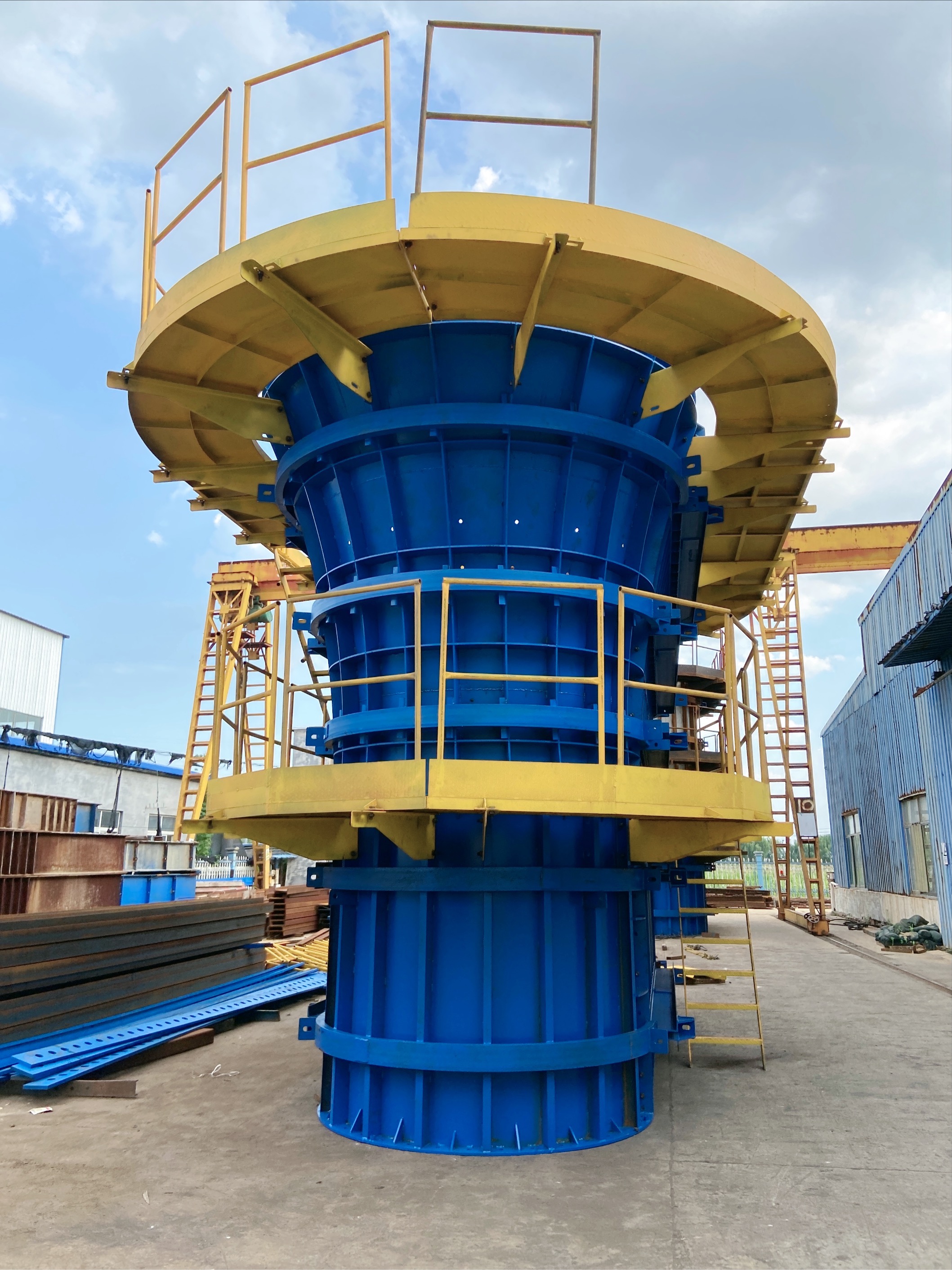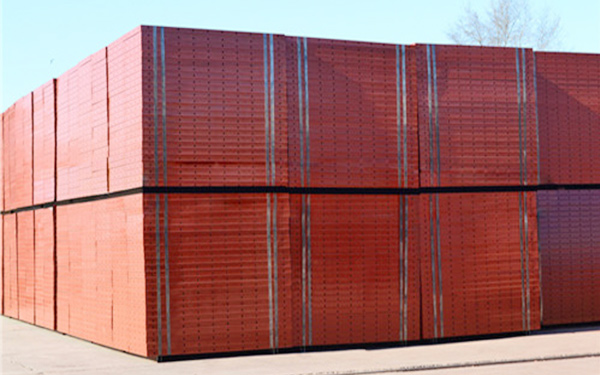Current position:
Home
News home
Industry News
Large scale steel formwork manufacturers: What are the advantages and disadvantages of galvanizing treatment for steel formwork?
Large scale steel formwork manufacturers: What are the advantages and disadvantages of galvanizing treatment for steel formwork?
source:Shandong Tianhong Heavy Industry Co., Ltd
Abstract:
In practical applications, it is necessary to weigh the advantages and disadvantages of galvanizing treatment based on the usage environment and requirements of steel formwork, and choose the appropriate treatment method.
Galvanizing treatment of steel formwork is a common anti-corrosion method, which has the following advantages and disadvantages:
advantage
Good anti-corrosion performance: The galvanized layer can effectively prevent steel oxidation and corrosion, extending the service life of steel formwork.
Reduce friction coefficient: After galvanizing, the surface is smoother and smoother, which can reduce the frictional resistance with other materials and improve construction efficiency.
Beautiful and durable: The galvanized layer not only has a metallic luster, but also enhances wear resistance and hardness.
Comprehensive coverage: The galvanized layer can cover all parts of the steel formwork, including corners and concealed areas, providing comprehensive protection.
The process is relatively simple: the galvanizing process is mature, the operating procedures are standardized, and the processing can be completed quickly.
Environmental protection and energy conservation: The galvanizing process generates less waste, has a small impact on the environment, and the materials and waste can be recycled and reused.
disadvantage
High processing cost: Galvanizing requires specialized equipment and materials, which increases production costs.
Increased processing difficulty: The galvanized layer may change the size of the steel template, affecting subsequent processing accuracy, and can easily cause damage to the coating during processing.
Has a certain impact on the environment: If the wastewater and exhaust gas generated during the galvanizing process are not treated properly, they can pollute the environment.
Possible defects in the coating: Improper process control during galvanizing may result in uneven zinc flowers, zinc flow patterns, bubbles, zinc slag adhesion, and other defects, affecting the protective effect and appearance quality.
Poor welding performance: The galvanized layer is prone to producing toxic gases during welding, and the galvanized layer at the welding site is easily damaged, requiring secondary protection.
High surface treatment requirements: Proper treatment is required after galvanizing, otherwise the galvanized layer may affect the protective effect due to bumps and scratches.
In practical applications, it is necessary to weigh the advantages and disadvantages of galvanizing treatment based on the usage environment and requirements of steel formwork, and choose the appropriate treatment method.
advantage
Good anti-corrosion performance: The galvanized layer can effectively prevent steel oxidation and corrosion, extending the service life of steel formwork.
Reduce friction coefficient: After galvanizing, the surface is smoother and smoother, which can reduce the frictional resistance with other materials and improve construction efficiency.
Beautiful and durable: The galvanized layer not only has a metallic luster, but also enhances wear resistance and hardness.
Comprehensive coverage: The galvanized layer can cover all parts of the steel formwork, including corners and concealed areas, providing comprehensive protection.
The process is relatively simple: the galvanizing process is mature, the operating procedures are standardized, and the processing can be completed quickly.
Environmental protection and energy conservation: The galvanizing process generates less waste, has a small impact on the environment, and the materials and waste can be recycled and reused.
disadvantage
High processing cost: Galvanizing requires specialized equipment and materials, which increases production costs.
Increased processing difficulty: The galvanized layer may change the size of the steel template, affecting subsequent processing accuracy, and can easily cause damage to the coating during processing.
Has a certain impact on the environment: If the wastewater and exhaust gas generated during the galvanizing process are not treated properly, they can pollute the environment.
Possible defects in the coating: Improper process control during galvanizing may result in uneven zinc flowers, zinc flow patterns, bubbles, zinc slag adhesion, and other defects, affecting the protective effect and appearance quality.
Poor welding performance: The galvanized layer is prone to producing toxic gases during welding, and the galvanized layer at the welding site is easily damaged, requiring secondary protection.
High surface treatment requirements: Proper treatment is required after galvanizing, otherwise the galvanized layer may affect the protective effect due to bumps and scratches.
In practical applications, it is necessary to weigh the advantages and disadvantages of galvanizing treatment based on the usage environment and requirements of steel formwork, and choose the appropriate treatment method.
Disclaimer: The content provided on this website is for reference only (some information is sourced from the internet). The publication of content information is for the purpose of transmission and does not represent the views of this website. If the content involves copyright issues, please contact the website editor in a timely manner, and we will take appropriate measures to avoid unnecessary losses for both parties.
Related article
- Bridge anti-collision guardrail steel formwork: What are the common methods for correcting steel formwork?
- Steel template manufacturers, wholesalers, and suppliers: What should be done if there are scratches on the surface of the template?
- Steel formwork manufacturer: How to deal with and prevent steel formwork running and bursting?
- Pulling out Mountains and Rivers for Win Win - Jining Tianli Employees Celebrate National Day Holiday with Tug of War Competition
- Customized manufacturer of composite steel formwork: How to prevent and deal with steel formwork that is not allowed to be reserved or embedded?
- Pulling out Mountains and Rivers for Win Win - Jining Tianli Employees Celebrate National Day Holiday with Tug of War Competition
- Pulling out Mountains and Rivers for Win Win - Jining Tianli Employees Celebrate National Day Holiday with Tug of War Competition
- Nearby steel formwork manufacturers: What are the main functions of steel formwork?
- Processing custom steel formwork factory: About rust prevention treatment methods and precautions for steel formwork
- Customized rental of steel formwork: What are the dimensions, specifications, and models of steel formwork?
- Customized processing of bridge steel formwork: how to prevent and deal with unstable formwork support?
- Pulling out Mountains and Rivers for Win Win - Jining Tianli Employees Celebrate National Day Holiday with Tug of War Competition
Hot article

- T梁模版
- Pulling out Mountains and Rivers for Win Win - Jining Tianli Employees Celebrate National Day Holiday with Tug of War Competition
- 力“拔”山兮,“河”作共赢——济宁天力员工欢度国庆假期之拔河比赛
- Pulling out Mountains and Rivers for Win Win - Jining Tianli Employees Celebrate National Day Holiday with Tug of War Competition
- Pulling out Mountains and Rivers for Win Win - Jining Tianli Employees Celebrate National Day Holiday with Tug of War Competition
- Pulling out Mountains and Rivers for Win Win - Jining Tianli Employees Celebrate National Day Holiday with Tug of War Competition
- Pulling out Mountains and Rivers for Win Win - Jining Tianli Employees Celebrate National Day Holiday with Tug of War Competition
Recommended article

Customized rental of construction steel formwork: How to prevent and deal with loose joints in steel formwork?

Customized rental of steel formwork: What are the dimensions, specifications, and models of steel formwork?
- Customized rental of construction steel formwork: How to prevent and deal with loose joints in steel formwork?
- Customized rental of steel formwork: What are the dimensions, specifications, and models of steel formwork?
- Steel formwork manufacturer supply specifications: What are the applicable fields for steel formwork
- 力“拔”山兮,“河”作共赢——济宁天力员工欢度国庆假期之拔河比赛
- Pulling out Mountains and Rivers for Win Win - Jining Tianli Employees Celebrate National Day Holiday with Tug of War Competition
- Pulling out Mountains and Rivers for Win Win - Jining Tianli Employees Celebrate National Day Holiday with Tug of War Competition
- Pulling out Mountains and Rivers for Win Win - Jining Tianli Employees Celebrate National Day Holiday with Tug of War Competition
- Pulling out Mountains and Rivers for Win Win - Jining Tianli Employees Celebrate National Day Holiday with Tug of War Competition



